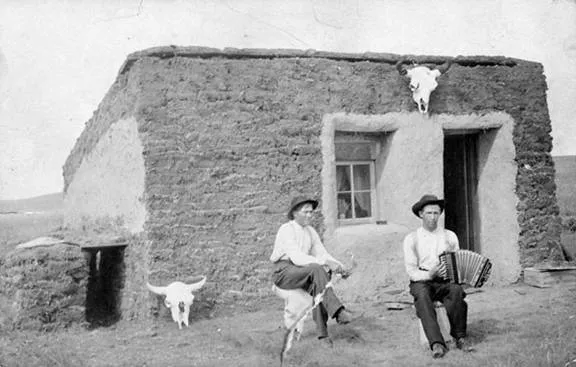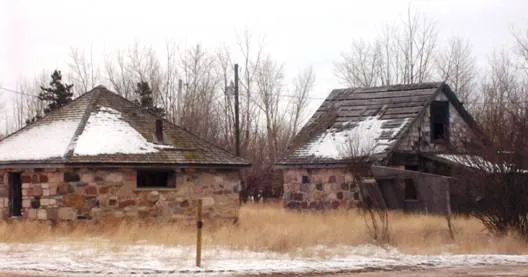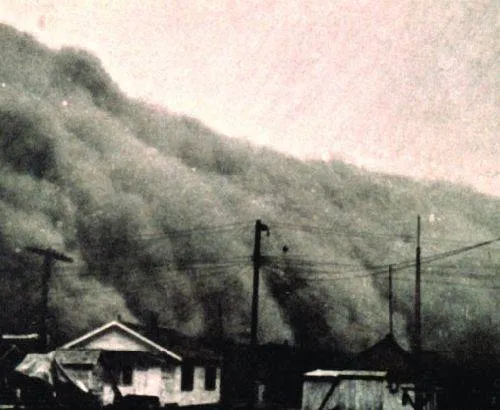-
Your cart is currently empty
Subtotal: C$0.00
Many people are almost completely unaware that these lands even exist. The history of the Special Areas is fascinating and provides us with a valuable lesson about sustainable farming.
Many international visitors to TK Ranch are convinced that the edge of the earth is just over the horizon. We've had many conversations with them about what it was like for the settlers to arrive and try to survive living here over a century ago. The area that surrounds TK Ranch began being settled in the early 1900s. Many of these early pioneers had been lured by the federal government by the Dominions Lands Act with promises of rich farmland and countless opportunities. Settlers were given a quarter section (160 acres) for $10 as long as they met the requirements of staying on the land for three years, breaking at least 30 acres and building a permanent residence there. But for many the transition from the populated east to the wilderness of western Canada was a major adjustment.

To begin with, there were few building materials on the treeless prairies. As a result of this many pioneers built sod houses. People sometimes wonder why canopy beds were invented — it was to keep dirt, insects and the like from falling into your bed from the ceiling. But ‘soddies’, as they were called, were warm in the winter and cool in the summer and provided settlers with necessary shelter from the elements.

On the south end of TK Ranch, in our yard, two stone buildings remain from early pioneer times. The little stone house at right was built in 1910 by Ernest Paterson. He collected granite stones from the surrounding prairie, split them himself and built his home. He had to travel to Castor, 70 kms away, to get the wood to build the roof and floors. The blacksmith’s shop, seen at left, was built in 1923. Our yard used to be called “Whatcheer” after an old English greeting. There used to be a post office here as well. These beautiful buildings are in dire need of restoration. If anyone is interested in helping us restore them please let us know!
For many years the prairie was a good place to live. Many small towns, like Spondin, Hemaruka, Scotfield and Richdale began. Spondin is located 6 miles west of us and used to be a thriving town, but the “dirty thirties” changed everything. In 1921 the population of the area was approximately 30,000 people. When the drought began the prairie showed her true nature. No rain meant crops wouldn’t grow and dry weather was ideal for grasshoppers. So even if you did get a crop, the hoppers would take it. While many people consider 160 acres a lot of land, in this country you require about 40 acres for one cow/calf pair. That means that on a dry year we can only sustain 250 cows on 10,000 acres. So imagine these poor people trying to live when they could barely get enough water for themselves, let alone their garden, crops or livestock. Wheat yields dropped from 34.8 bushels per acre in 1927 to 1.1 bushels per acre in 1931. Many settlers resorted to eating gophers, grasshoppers or whatever they could find. Unbelievable dust (dirt) storms were recorded in the area and left the land in ruins. Cultivated lands were left unfit for human or animal to live. The picture to the right shows one of these storms.

What was worse, these people were so poor they couldn't afford to pay the taxes on the land they had homesteaded with unbelievable dedication. This meant they were faced with potential jail time. The Alberta government recognized this crisis and offered these pioneers an option, to give their homesteads back to the crown and walk away with their debts paid. The Special Areas Act was passed and in 1938 the Special Areas Board was formed as an agent of the crown to provide administrative services for those people who wished to remain. Twenty-five thousand people left the area and the crown recovered 1.5 million acres of homestead lands. Since that time, the Special Areas has been integral in fostering respect for the prairie and an appreciation of its intrinsic value in Alberta. Today 5,000 people live in the Special Areas. TK Ranch is located in Special Area 2.